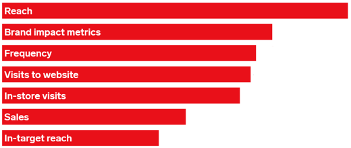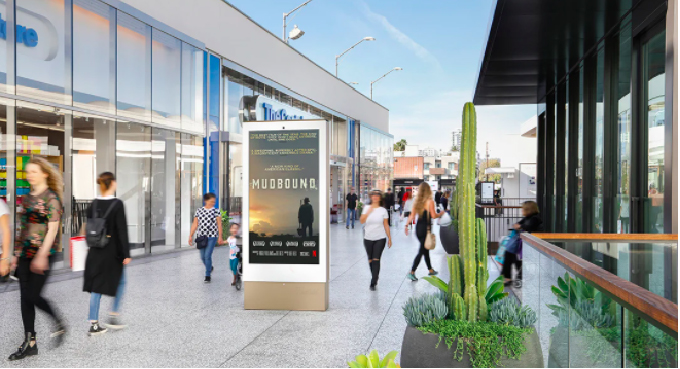Advertising efficiency is of paramount importance to any brand in their marketing strategy. To plan campaigns efficiently and evaluate their actual performance, marketers need data. There are industry standard and comprehensive tools, methodologies and standards established for the measurement of TV and online advertising audiences. They are comprehensive, universal and controlled by global industry associations, such as MRC, IAB and others. Audience and performance data available for those major advertising channels is used by every media planner or buyer working on behalf of any brand.
DOOH is a new media, which is different from other channels in many ways. Digital advertising screens are most frequently place-based, strategically positioned to command the attention of any passer-by and designed to reach multiple viewers at any given time. This media channel is very transparent, impactful and available in a close proximity to a physical store. This makes DOOH advertising media highly attractive to brands. On the other hand, for quite some time, marketers could not access the same level of audience and performance analysis data for their DOOH campaigns.
This has changed in the recent years through the evolution of sensor- and camera-based audience measurement technologies, such as Anonymous Video Analytics and Wi-Fi counting; mobile location data availability and standardisation; and industry-wide efforts to bring multiple data sources together and develop some broadly accepted metrics. This evolution is still ongoing, but now brands can leverage DOOH performance data directly comparable with the metrics they have long been relying on while working with TV and Digital Advertising. They can now even add DOOH Smart Screens to their advertising mix while booking their campaigns programmatically.
According to eMarketer, metrics most commonly used to assess the effectiveness of programmatic DOOH campaigns include the following:

On this list of metrics, Reach, Frequency and In-Target Reach can be directly measured using a number of specialised tools to show the audience of an ad or a campaign. Anonymous Video Analytics, Wi-Fi sensors and mobile location data can be used to accurately measure those KPIs in any physical environment, for any connected digital screen, and every ad.
Brand Impact is usually measured via the analysis of social media interactions, brand mentions, search metrics, surveys, polls and aggregate reviews. This enables attribution of any changes in the brand’s perception by customers to a particular campaign.
Finally, data on In-Store Visits (Traffic), Visits To Website and Sales allows to attribute any changes in sales and traffic to the impact of a DOOH campaign.
The metrics above are essential, however, they only provide a core minimum set of ways to measure campaign performance in DOOH. Brands are looking for many more perspectives and ways to analyse impact of every message and optimise it through multiple iterations as a part of their marketing strategy.
Thanks to the advancements in measurement tools, such as Anonymous Video Analytics, advertisers are now able to analyse their audience in real time. They are able to measure impressions, but also actual views of their ads, as well as finely calculate dwell and attention time and estimate their target reach using accurate demographic segmentation. Such segmentation can be further enriched with multi-dimensional mobile location data enabling insights into average socioeconomic profiles and preferences of the campaign’s audience. This allows audience targeting and campaign optimisation, in real-time and over a series of comprehensive A/B tests backed by rich audience measurement data. Such approach in DOOH has been proven to increase traffic and sales and make campaigns more targeted and contextually relevant.
Via technology integration, audience metrics can now be provided for each play of an ad copy, on every individual screen, and then aggregated to provide campaign-level analytics, as well as the analysis of any visual or message of the campaign.
Brands can use a multitude of available DOOH metrics to build a view of the full advertising/sales funnel and analyse the campaign performance from top to bottom.

Audience engagement metrics, such as Watchers, Dwell and Attention Time, as well as a granular audience segmentation, in addition to the core and traditional metrics, enable new ways to measure the audience and performance of DOOH campaigns, similar to the ways available for Digital Advertising that brands have now been using for a long time. This opens a new horizon for truly cohesive multi-channel campaigns, where brands can fully utilise the strengths of every channel with a universal set of compatible metrics across the board.

A growing number of advertising networks using a rich variety of measurement technologies and metrics, ongoing discussions about standards and cross-media measurement, as well as the industry-wide emergence of multiple Data Management Platforms leveraging those metrics for the high-quality analysis of audiences and campaigns in recent years demonstrates the maturing of DOOH. Smart screen advertising networks have become a major advertising channel with unique characteristics important to most brands across the globe. This advance is, in a big part, enabled by the sophistication of the data, measurement technologies and methodologies.
For brands, data driven DOOH is now becoming an important part of their marketing strategy allowing them to engage their potential customers on their way to a store, enabling the flexibility to use context in their messages and ultimately build an efficient multi-channel communication with their target audiences.

